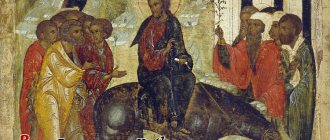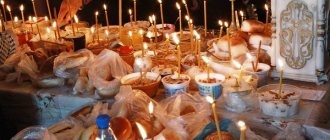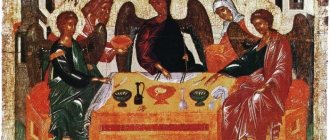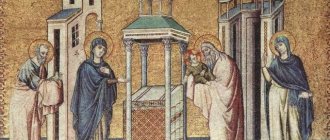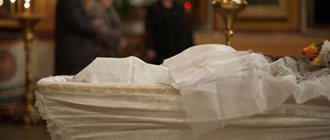» Rituals and rituals » How do Russians perform funeral rites?
0
5596
Article rating
Death is a natural process that every person must go through. In all cultures, there are certain ritual actions aimed at seeing off the deceased. How do Russian funeral ceremonies work? Let's look at the procedure carefully.
Russian funeral ritual
What it is
All nations had certain traditions of saying goodbye to a person. Differences in burial are associated with religious and national customs. The body was given to one of the elements:
- earth (burial in a crypt, grave);
- fire (cremation);
- air (hanging remains);
- water.
Nowadays you can find combined rituals that combine several rituals. The deceased was buried in a natural state or the limbs were bent. Modern traditions favor earthly burial.
In many cultures, death is a transition from one world to another. In order not to disturb the deceased, certain ritual actions must be observed. Some peoples were forbidden to cry and grieve when saying goodbye. Others, on the contrary, needed to show their grief as much as possible.
Christianity has had a huge influence on many cultures. The peculiarity of religion is that it did not completely destroy old customs, but quietly adjusted. Funeral rites in Orthodoxy retain echoes of ancient pagan beliefs.
“Readers” and spiritual poems
Karl Friedman. Funeral. 1966
The main musical and folklore genre of modern funeral and memorial rites in the village of Epikhino, Shatura district, are spiritual poems. They are sung alternately with the reading of the Psalter before the funeral (“they didn’t leave the funeral ceremonies, they just read this”), on the “nine days” (ninth day), “fortieth day”, “six months” and on the “godina” (year) from the day death.
The guardians of spiritual verses are older women (over 60 years old). In everyday life they are called “readers”, “readers” or “spiritual” (“when the spiritual gather, they do not discuss what is going on in the world, but sing everything about God”, and the poems themselves are “divine songs”, sometimes “ rhymes."
How burial evolved
The traditional ritual is much longer than what happens now. It began from the moment the first signs of death appeared. Knowledge about the sacrament was lost, and modern burial was reduced.
Back in the 19th century, Russian peasants prepared for leaving in advance. It was considered good form if a person made the coffin himself. It is placed in the attic and filled with grain. On the day of the funeral, cereals were poured out to the birds.
The clothes for the last outfit were also sewn ahead of time. There was a special technique that made it possible to create decoration without a single knot or buttons. Women prepared a “dowry” for both themselves and their spouses. All the necessary attributes for death were tied into a bundle.
In the 20th century, an active struggle against Orthodoxy began, so the ritual became as mundane and simplified as possible. The destruction of faith in the afterlife made the ritual boring and lean. The sacred meaning of all actions has disappeared, and what remains is the banal burial of a dead body.
Seeing off
A funeral is an event that will happen to every person. If you carry out all the actions according to the rules, it will be easier for the deceased to leave the house. Let's look at the main aspects.
At this stage it is necessary to prepare the body for the sacrament. People who were not related by blood were invited to wash the remains. The deceased is washed with warm water, reading the prayers “Lord, have mercy” or “Trisagion”. Remember that only representatives of the deceased’s gender are suitable for the procedure.
For funerals, Russians usually wear clean, new clothes. You can’t take other people’s clothes, especially relatives. In this case, the deceased will “take” the person with him. Our ancestors were dressed in the best attire. It was customary for single people to dress up as if for a wedding.
The body was laid on the table and covered with a shroud - a white blanket. Before placing the deceased in a coffin, the remains and the “wooden house” were sprinkled with blessed water. A pillow was placed under the head, and a “crown” was placed on the forehead. Remember that your eyes must be closed and your lips closed.
The arms are folded crosswise - the right one is on top of the left one. To secure the limbs, they were tied with special shackles, which were released before burial. They always wore a cross and placed an icon on their chest: for men the Savior, and for women the Mother of God. While the deceased is in the room, a lamp or candle at the head of the house is lit.
The deceased should not be left alone in the room
This applies to the situation when the body is at home before burial, and not in the morgue. There must be someone next to the coffin day and night as a sign of respect for the deceased. Priests recommend reading certain prayers to spiritually support the deceased.
According to human physiology, even after death, his eyes can accidentally open, and then the belief warns. The deceased will take whoever his gaze is directed to with him. But if someone is next to him and closes his eyes in time, he will thereby avert trouble. And to avoid opening the eyes, small objects, for example, small coins, are also placed on them.
Another reason why you should not leave a deceased person alone in a room is ill-wishers who may put something in the coffin that will prevent the soul from leaving our world. Or, conversely, steal some thing belonging to the deceased. For example, magicians use such objects in their spells.
Pets, especially cats, should not be allowed near the deceased.
If one of your pets touches a deceased person, this can spell disaster for the whole family, and to prevent this from happening, you need to wash the animal’s paws and read the necessary prayer.
And also one of the reasons is that it is believed that the devil can appear in the form of a cat and take the soul of the deceased to hell.
Superstitions while the dead man is at home
Russian funeral rites are densely overgrown with signs. What are the rules of conduct before the coffin is removed from the premises? There are many points that should not be forgotten.
There is a superstition that you should not leave a dead person alone in a room. All items associated with death are a desirable artifact for sorcerers. Those nearby make sure that nothing is missing or put in the coffin.
The open eyes of a dead man were a bad omen. It is believed that the person on whom the gaze falls will soon die. They carefully examine the body, not allowing even the slightest gap between the eyelids.
Old people say that if a deceased person accidentally looks into a mirror, he will be captivated and will no longer be able to leave without the help of a knowledgeable person.
While the coffin is in the room, you cannot sweep it, otherwise you can “sweep out” everyone living in the house. After the remains have been taken to the cemetery, there remains a person who cleans up. To drive out death, they thoroughly wash the floor and throw away the broom, bucket and rag.
The pieces of furniture on which the sarcophagus with the deceased stood are then turned upside down. It can be installed in normal condition only after forty days. To prevent the spirit from disturbing the residents, stools were broken in the villages and burned at the stake.
Parting gifts
The custom of burying men and women with gifts has not completely disappeared to this day. However, the ancient Russians did this on a grand scale.
What was given in the past
The richer and more noble a person was, the more generous gifts accompanied the deceased to the ground.
- Men were given weapons or craft tools at burial.
- Women were given jewelry and household utensils as funeral gifts.
- Along with the noble deceased, they buried killed horses, dogs, several fellow tribesmen and even his wife.
It should be noted that the man’s wife and servants made such a sacrifice voluntarily; it was considered honorable. And after the funeral, according to custom, they always organized military competitions and a magnificent feast, at which it was not customary to mourn and cry.
What are they giving today?
The Orthodox Church disapproves of attempts by parishioners to accompany funerals with gifts. It is considered correct to bury men and women in the form in which they would be admitted to church: in modest, discreet clothing without unnecessary decoration. For women, according to the church canon, a skirt and headdress are required.
However, grieving relatives still try to turn the coffin into a camp set, putting the deceased’s favorite things into it before burying it. Most often in Russia they place in a coffin:
- handkerchiefs;
- Cell phones;
- watch;
- money;
- combs;
- sweets.
But all this is considered unnecessary and is not approved by the Orthodox Church tradition.
Takeaway
Traditions at Russian funerals required that the coffin be placed in the center of the room. The funeral service is scheduled between noon and sunset. Any funeral events in the evening are prohibited among Orthodox Christians. The mirrors in the home were covered and the clocks were stopped. Often, towels were hung on the windows, on which the soul rested.
To prevent the deceased from taking any of his relatives, they must be carried out feet first. Our ancestors believed that such manipulation would make the deceased forget the way home. When moving the coffin, you must try not to hit the door or walls with it. In northern Russia, after the deceased left the house, a stone was placed under the corner of the building. Such a talisman protected all loved ones from imminent death.
Removal of the deceased is an important procedure, accompanied by the emotional state of the relatives. Society condemned those who did not cry at funerals or did not grieve enough. At the same time, mothers were forbidden to shed tears for their dead children. It was believed that after death they turned into angels, so it was impossible to be sad.
Among the Slavic peoples, traditions forbade leaving the dead alone. There was always one of our friends, neighbors or acquaintances sitting nearby. It is believed that the soul is very vulnerable in the first three days, so they provided maximum support - they said prayers from the Psalter or invited special readers.
Orthodoxy's attitude to cremation
Is it possible to cremate an Orthodox person?
The Orthodox Church has a negative attitude towards the cremation procedure . This is due to the fact that after the Last Judgment the body will have to rise before the Lord, and burial in the ground expresses hope for the Resurrection. That is why the Christian rite does not provide for the destruction (burning) of the body, but its burial - by analogy with how grain is sown into the ground so that it then comes to life and sprouts. But this is in theory.
In practice, in all crematoria, priests conduct funeral ceremonies in person.
Cremation is permitted by the church only in cases where circumstances force it. A blessing for burning the remains must be obtained from the priest, explaining the reasons for this decision. The urn with ashes is not brought to the church for the funeral service. If the deceased is cremated, then only a shortened rite can be ordered - an absentee funeral service .
Due to socio-economic circumstances in the Russian Federation, more and more believers prefer cremation rather than burial. But according to Orthodox laws, it is necessary to bury the body through a funeral.
The attitude of the church towards the cremation of an Orthodox Christian
Procession
Funerals in Orthodoxy were treated with great reverence, so the procession was accompanied by the sobs of relatives. At the head was a man who carried a crucifix or icon on a funeral towel. According to church rules, blood relatives and friends are required to carry the coffin with the remains. But superstitions became stronger that the action was trusted exclusively to strangers.
Fears of death remained from pagan times, so they tried not to touch funeral attributes with their hands. The lid and sarcophagus were carried with gloves or on special sheets. In winter they brought them to the cemetery on sleighs. Nowadays hearses perform this mission.
The first person the procession met along the way had to be given bread wrapped in a towel. This ancient ritual symbolized the meeting between the world of the living and the abode of the dead. The “traveler” was obliged to pray for the soul of the deceased.
The procession was forbidden to stop before a cemetery or church. The only exceptions could be places dear to the deceased. It was believed that the more respected the deceased was, the longer the coffin was carried.
Basic rules for funerals in Orthodoxy
Relatives and loved ones say goodbye to the deceased.
For an immortal soul, it does not matter what happens to its mortal physical shell. Funerals are intended to reconcile the deceased's surviving relatives with his death. The absence of a grave, if a person disappeared in the mountains or drowned in the sea, does not affect his posthumous fate in the Kingdom of Heaven.
There are no rules that allow you to organize a funeral as it should be. The Bible contains information that allows us to properly care for the soul of a deceased person, but not for his body. Many rituals observed during funerals, including by believers, are pagan and are not approved by the Church (filming a video, for example, a video from the funeral of Alla Verber).
Signs of a funeral procession
After the coffin was taken out of the house, there were certain superstitions. If the funeral procession went past the windows, then our ancestors tried to wake up all those sleeping. It was believed that the deceased took with him any person who was asleep.
Orthodox funeral rites prohibited viewing the procession through glass. According to signs, the soul was nearby and could be offended by such uncivilized behavior. The punishment for the impudent person was illness and quick death. The old people advised not to stare out the window and at the dead man, but to look away and make the sign of the cross.
You cannot cross the road before the funeral procession. If a person died from an accident or illness, then the trouble “jumped” to the taboo violator. It is better to wait out the procession on the side than to receive a negative blow to the aura.
When a dead person is taken out of the house, the old people did not advise looking into the windows. A careless movement of the head will attract death to these dwellings. To prevent the relatives of the deceased from dying, you cannot turn back during the procession.
Why a pregnant woman should not attend a funeral
The child in the womb is the most vulnerable and unprotected, because he does not yet have a Guardian Angel, who appears only after birth. This means that the full force of death can have a bad effect on the child, it can take him with her or the child will not be born healthy.
And if you are not superstitious and do not take the above seriously, then pay attention to this from the point of view of medicine and psychology. A pregnant woman is very sensitive and unstable. And the very news of the death of a loved one already causes a huge shock for the child’s body, not to mention the funeral, which only intensifies it.
In order not to encounter problems in the health of mother and baby and not to provoke premature birth or miscarriage, protect the pregnant woman from any participation in organizing the funeral; it is better to contact a funeral agency that will help resolve any issues.
But at a memorial dinner, a pregnant woman can be present to mentally say goodbye and remember the deceased with a kind word.
Memorial service
A church service for the deceased was held before burial. It can be done both in the temple and at home. The priest reads prayers and psalms that help calm the soul and adapt it to the new world. The texts figuratively tell about a person’s earthly journey and his life’s ordeals. At the end they mention heavenly conduct and great love for people.
Why is a memorial service needed? When the spirit leaves the body, demons gather around it and try to drag it to hell. It is at this moment that the maximum help of the church is needed, and the action of the ritual facilitates the transition. For three days after death, the soul will be in places where they pray for it.
A secular memorial service is a farewell ceremony at the coffin that precedes burial. The civil ceremony does not carry any religious overtones, although it often takes place in the presence of the priest. There are no serious requirements for the ritual, so it is carried out according to established traditions or the will of the deceased.
Funeral service, remembrance of the dead
Representatives of other religions are hardly interested in how the funeral of an Orthodox person takes place, but Christians should know about the importance of observing all rituals. The funeral service is the last procedure that is carried out before the burial of a person. It is preceded by:
- unction (conducted by a priest while the patient is still alive, in the case when he is sick and knows that he will soon die);
- confession (many dying people try to confess their sins before death);
- communion (one of the rites performed on a person before his death);
- reading prayers;
- washing and dressing the deceased;
- funeral lithium (it begins 1 hour before the coffin with the deceased is taken out of the house).
Important! For an Orthodox person, it is important that all required procedures are followed. This will help him on his way to the Gates of Heaven. When organizing a funeral and not knowing where to start, you should ask what religion the deceased belonged to in order to understand exactly how to properly bury a person according to Christian custom or the traditions of another religion.
How to arrange a funeral service
They agree on when the burial will take place and the funeral service will be held immediately on the day of the person’s death. You should hurry up with this, there is a high risk that other events will be held in the chosen temple on the appointed day of the funeral and the priest will be busy. In the church they will tell you what is needed for an Orthodox funeral, how to organize it yourself, if no one has step-by-step instructions in advance, because, in most cases, people are not prepared for death.
Burial
Christian funeral rites are performed until the sun begins to set below the horizon. The pagan belief remains that the daylight takes with it the soul of the deceased. If relatives do not have time to bury the coffin before this period, then one of the relatives will follow the deceased.
When saying goodbye to the deceased, you must kiss the crown of his forehead. You are allowed to cry and lament. The priest says prayers. The lid is nailed down and the body is carefully lowered into the hole. The sacred action is a handful of soil thrown into the grave with the words: “Rest in peace.”
In the pit, the coffin is placed facing east. A cross is installed at the feet, facing west. According to beliefs, the “gaze” of the deceased should fall on a Christian symbol. Ancient traditions required that the grave have only a wooden monument, handmade by relatives. Modern stone slabs do not correspond to popular beliefs.
Sometimes a land redemption ritual was held at the cemetery. Those present took small coins and threw them into the pit. These are fragments of pagan rituals that have survived to our times. Orthodox traditions exclude any non-Christian customs.
When returning from the cemetery, it was important not to bring with you a piece of the world of the dead. The soil was carefully removed from the shoes, and those in contact with the deceased washed in a bathhouse. It is forbidden to invite an orchestra for funerals of Russian Christians. It is forbidden to perform burials on Christmas or Easter.
How much does a funeral cost?
The cost of the funeral is determined:
- the cost of the coffin (5-15 thousand rubles or more);
- the price that will have to be paid for transporting the deceased (depending on the distance);
- much depends on the availability of space in the cemetery, sometimes you have to pay for it (from 25 thousand rubles).
Relatives will have to pay the funeral home's expenses, including digging the grave and providing tools and materials needed for the burial. Church expenses will also have to be paid. Thus, the price of a funeral service is 600-1000 Russian rubles in the provinces and up to 3 thousand rubles in Moscow. The clergy do not set a price list; the donation is voluntary, but usually everyone makes it.
The morgue stores the body free of charge for 7 days. At this time, also free of charge, morgue employees are required to wash the deceased, change his clothes and take him to the funeral hall. If the body is mutilated, then you will have to pay up to 20 thousand rubles for makeup and reconstruction. They charge up to 10 thousand rubles for digging a grave.
On average, you will have to pay from 30 to 60 thousand rubles for a funeral. You can also organize a social funeral if your budget is limited. To do this, contact a specialized city service (there is one in Moscow), whose employees provide an economy-class funeral kit (coffin, grave, wreaths).
Signs at the cemetery
A grave dug out of size is a sure sign of the death of one of the family members. A lid forgotten at home or mourning wreaths have the same meaning. Remember that the coffin must be nailed up only at the burial site. Death will take not only the person who violated the ban, but also the family of the deceased.
Children and pregnant women were prohibited from attending the funeral. Babies do not have natural energy protection, so a negative attack from evil forces is possible. Women undergoing childbearing could receive severe damage, which would be inherited by the baby. The first person he met was entitled to food “for reference.”
They already enter the cemetery through the gate, and the deceased is taken through the main gate. On the way back you can choose any route. Remember that they don’t walk in front of the dead either. First they carry the coffin, and then the living come up.
When hammering nails into the lid, care must be taken to ensure that the person’s shadow does not fall on the sarcophagus or grave. Old people paid attention that the dead man had no rings, and that the buttons were undone. Before lowering into the pit, be sure to untie the knot holding the fetters together. If you forget to do this, then one of your loved ones will die.
If inner strength pushes a person away from the deceased, then you should not force yourself and kiss the deceased on the crown. The living are often afraid of the dead, so they cannot overcome their fears. By the way, in ancient times it was possible to get rid of fear by simply touching the leg of the deceased.
Wake
According to the rituals, after the burial, a modest table is organized for the hole diggers. Mandatory dishes are kutia, pancakes, and the rest is at the request of relatives. Alcohol was not a necessary product, so its availability was discussed in advance. Bread or cookies were left on the mound for birds, which were considered the souls of the dead.
Funeral services were held on the day of the funeral, 9 and 40 days after death. Our ancestors believed that angels brought the soul of the deceased to the house where they were waiting for it. During this period, it was necessary to go to the cemetery to eat food with the deceased. A little was left at the grave and also distributed to people.
The funeral ceremony brought together relatives, friends and the poor at one table. It was believed that while the spirit travels the earth, it experiences the same needs as the living. A special place was allocated for it under the images and a separate device was installed. A spoonful of kutya was placed on the plate, and the glass with the drink was covered with a piece of bread.
Christian traditions prohibited people from drinking alcohol. Drunk drinking is a relic of pagan funeral feasts. Excess alcohol leads a person to sinful thoughts, preventing the soul of the deceased from moving to another world.
The ceremony cannot be held on weekdays during Lent. The event has been rescheduled for the coming Saturday or Sunday. After the funeral, it was customary to give alms. Now this procedure has been transformed into the ritual of giving cookies and sweets.
“Orders” and white scarves
Alexey Korzukhin. Funeral service at the cemetery. 1865
One of the local ethnographic groups of the Russian population, which attracted the attention of researchers back in the 19th century, is the Goryuns. They lived in the western part of the Kursk Posemye, in the Putivl (and earlier in the Belopol) districts of the Sumy region of Ukraine. This territory was part of the Kursk province until 1925.
The most specific features of the funeral tradition of the Goryunov include the custom of burying the dead in gardens, within the area of residence.
In addition, all the women of the village participate in mourning the deceased. Loud funeral lamentations notified all residents of the death of a fellow villager. The washed and dressed deceased was placed on a bench, men - to the front wall of the house, and women - to the right side, facing the yard. They started wailing - or, as they said here, ordering - from the threshold when they came into the house to say goodbye to the deceased. In the warm season, residents, according to an ancient custom, came to the funeral in white scarves.
Signs after the funeral
The rules state that after the cemetery it was forbidden to go to visit. It was believed that a person carries a particle of death within himself, so tragedy is possible in this house. When leaving the churchyard, the ancestors did not recommend looking back.
During the wake, they place an image of the deceased, and next to him - a glass of drink and bread. Anyone who drinks or eats the food of a dead person will soon die. The same applies to animals. To provide misfortune, the liquid was poured outside the house and the product was buried or burned.
After arriving from the cemetery, people always warmed their hands with a live (open) fire or washed them in hot water. It was customary to light candles and hold limbs over them. The flame burns all the negative energy that is located in places of death.
It is forbidden to grieve or cry heavily at a wake. Ancestors believed that a person goes to a better world, but can drown in the tears of loved ones. You can't get drunk at a funeral dinner. Such a rash act imposes the curse of alcoholism on the family. The first pancake, a spoonful of kutya and jelly are given to the deceased.
Already at home, they pour a glass of water, cover it with bread and sprinkle with salt. The item stands for forty days, after which everything is poured out and buried outside the house. Care should be taken to ensure that no one accidentally spills liquids or takes away food.
Potassium permanganate, eggs and “magic” soap
Leonid Solomatkin.
After the funeral. 1869 In the village of Srednyaya Sukhona, Vologda Region, the custom of preparing for death was popular. The old people prepared their death clothes in advance, expressed wishes about where and how to bury them, and how to commemorate them.
To better preserve the body of the deceased, a bowl of cold water in which manganese was dissolved was placed under a table or bench. Raw eggs were placed near the ears of the deceased, which were thrown into the grave pit during burial.
There was a belief here that after washing the deceased, soap acquired magical properties. It was stored and used in the future against diseases in humans and animals. If their hands got sick, they washed their hands and said: “The man left, nothing hurts him, and nothing hurts me.”
Meal on the ninth day
Orthodox traditions require relatives to gather at the same table 9 days after death. The ritual passed down from pagan ancestors and became firmly entrenched in Orthodoxy. Why is this ritual needed?
It is believed that from the ninth to the fortieth day the soul wanders through ordeals - obstacles in the form of sins. Good angels act as helpers with evil. Only after passing the “exam” can a person appear before God to receive the final verdict.
The relatives of the deceased create an appropriate atmosphere in the room where the memorial will take place. Allocate a separate place where you can put a glass of water, bread and light a candle. In the morning, a prayer service is ordered in the temple and alms are distributed for the repose.
Not only blood relatives and friends gather at the table, but also colleagues. The more people there are, the easier it is for the soul. According to tradition, no one is invited to the funeral. Only those who consider it important to remember the deceased come. But if they are afraid that someone will forget about the date, then it is allowed to remind them a few days before the event.
Mandatory dishes are compote, kutia or any porridge. They become the link that connects the lost loved one and those around them. Remember that you are not just here to eat. On this day, the best moments in the life of the deceased are remembered.
Where can I get a death certificate?
A death certificate is issued at the registry office at the place of registration of the deceased. Sometimes this document is issued at the location of the organization that recorded the death (hospital, clinic, if the corpse is unidentified - morgue, police). A certificate is documentary evidence of a person’s death. It is necessary for presentation to various authorities.
Death certificate
Funerals are not something that people do every day, so in the event of the death of a relative, many people have a lot of questions related to their proper conduct. If the deceased was a Christian, it is important to comply not only with the procedures accepted in society at the state level, but also with Orthodox traditions during the funeral. Not only the body, but also the soul must rest; special prayers are read for this.
Features of forty days
An important ritual concludes the funeral rites. According to beliefs, the soul is still on earth for 40 days after death. During this time, she goes through ordeals and prepares for the transition to another world. The last line after which a person goes to heaven or hell.
Christian customs recommend that loved ones gather together at one table on this day. The funeral ritual is a farewell to the deceased, so it is important to properly prepare for the action. They order a prayer service for the repose in advance and give alms to the poor. In the morning they go to the cemetery with flowers: they light a blessed candle on the grave and leave sweets on the mound.
Remember that an event is not a way to meet relatives or friends. Songs, fun and consumption of alcoholic beverages are prohibited at meals. Kutia and pancakes are obligatory dishes on the table; vegetable salads and fish dishes are allowed. A place is allocated in the house for the deceased, with a glass of water and a piece of bread.
The feast begins with a minute of silence. Each of those gathered says a kind word about the deceased. It is important to restrain emotions and not cry: a loved one is on his last day on earth, so there is no need to overshadow his stay.
Funeral services
Concerned about easing the afterlife fate of the soul of the deceased, loved ones order funeral services in churches. At this time, special prayers are read for newly deceased people. They contain petitions to the Lord to forgive the sins of the deceased. In the Christian world there is a pious tradition of reading the Psalter for the departed. It is better to start this reading immediately at home after “Following the Exodus of the Soul.” It is included in the complete Orthodox prayer book.
The burial rite, popularly called the funeral service, is a funeral service. It is performed only once over the body of the deceased. Here the priest reads a prayer of permission. This is a special request for forgiveness of the sins of the deceased, which he repented of in confession during his earthly life. Previously, the burial ceremony was performed only in the temple. But in the last century, hiding from persecution by the Soviet regime, believers began to perform funeral services for the dead at home. This practice still continues today. However, it is more correct to consider the rite of burial to serve in the temple.
While the body of the deceased is at home, a litiya - a short funeral service - should be served. It is performed after the body of the deceased is immersed in the grave. It is also served at home upon returning from the cemetery.
On any day when there is a desire to make a special prayer for the repose of deceased loved ones, you can submit a note at the church with the names for the memorial service. This is a kind of short burial ceremony that can be performed many times.
Important little things for relatives
Death is a grief for loved ones, which knocks them out of their usual life. This is often used by sorcerers to perform magical rituals. To avoid such mistakes, let's look at the most likely actions.
Nothing should be put in the coffin, especially for other people's things, photographs, money. An object buried in the ground will “call” its owner to follow it. This is a very terrible witchcraft that affects both the owner and the final performer.
A towel is often spread near the sarcophagus. Remember that it is forbidden to step on it: everything connected with the funeral ritual must be lowered into the grave or burned. The exception is consecrated icons. Orthodox traditions prohibit the destruction of shrines, but they cannot be stored at home either. We recommend taking the images to the temple.
Fetters, washing water and hygiene items are the most powerful magical artifacts. Every sorcerer hunts for such things and tries to get them by any means. The ropes are buried along with the coffin, and the liquid is poured far from the house. The comb and soap used to clean the body are left in the grave.
Basic rules of the Orthodox funeral rite
According to the rules, the Orthodox funeral rite takes place in several stages, each of which is important:
- ablution - carried out immediately after the death of a person, this procedure includes washing the deceased with the parallel reading of special prayers;
- vestment - this concept includes putting clothes on the deceased;
- placing the body in a coffin;
- laying out all the necessary paraphernalia, namely a cross, shroud or icon;
- prayers for the repose of the deceased;
- funeral service for the sins of a Christian that he may have committed during his life;
- burial of a deceased person in an Orthodox cemetery;
- commemoration.
In general, the funeral procedure has a vague meaning in Christianity. According to the Bible, it makes no difference to a deceased person how the burial was conducted. This is due to the fact that even Jesus Christ was buried hastily. For this reason, the myrrh-bearers tried to honor him as quickly as possible.
Based on this, it does not matter how exactly the person was buried. For example, if he died in the mountains or went missing, this will not in any way affect his posthumous fate in the Kingdom of Heaven. Basically, all the necessary rituals are carried out not so much for the deceased, but for his close people who want to release the person in accordance with all Orthodox canons.
There are a large number of different rituals, as well as superstitions that accompany them. One of the most common is placing his favorite things in the coffin of the deceased so that he can use them in his new life. However, the problem is that the Bible does not indicate the need for things from the physical world. Therefore, such a procedure is nothing more than a superstition that dates back to the times of pagan customs.
Ablution
Immediately after a person dies, a ritual of cleansing the body, called ablution, is performed. This procedure is done so that the deceased appears before the Lord God pure and blameless. According to the scriptures, this procedure should be performed by men for men and, accordingly, by women for women.
However, today they are increasingly deviating from this rule by ordering a special service.
Ablution is carried out using warm water and clean sponges or rags. The body is completely undressed, placed on a flat surface covered with a white cloth, and the deceased is washed. The procedure begins from the head and slowly descends below, while the person who performs the ablution makes certain movements with his hands, and also reads a prayer. The gaze of the deceased is directed towards the icons. After the procedure, all clothes that were previously worn by the deceased should be burned and buried.
vestment
After washing, the body is dressed. Many elderly people independently prepare the outfit they want to use during burial. Therefore, it is better to fulfill the will of the deceased and dress him in clothes prepared in advance. The main rule is that the outfit must be clean and new, the shoes must also match, but it is not necessary to buy white shoes - any formal style will do.
Entombment
The deceased person is placed in the coffin in such a way that it is located in relation to the icons. In this case, the eyes are first closed (if they were open), the lips are also closed (if necessary, the jaw is tied up). The hands of the deceased lie crosswise on the chest.
Cross, shroud, icon
According to the rituals, the deceased should have a small icon or Orthodox cross in his hands. The body can also be wrapped in a shroud - this is a special fabric in which, according to the scriptures, deceased people were previously wrapped.
Prayer
After the body of the deceased has been washed, dressed and placed in a coffin, a canon called “Following the Exodus of the Soul” should be read. The texts of this prayer can be found in any complete Prayer Book:
“Holy God, Holy Mighty, Holy Immortal, have mercy on us. (Three times)
Glory to the Father and the Son and the Holy Spirit, now and ever and unto ages of ages. Amen.
Most Holy Trinity, have mercy on us; Lord, cleanse our sins; Master, forgive our iniquities; Holy One, visit and heal our infirmities, for Thy name's sake.
Lord have mercy. (Thrice)
Glory to the Father and the Son and the Holy Spirit, now and ever and unto ages of ages. Amen.
Our Father, who art in heaven! Hallowed be Thy name, Thy kingdom come, Thy will be done, as it is in heaven and on earth. Give us this day our daily bread; and forgive us our debts, just as we forgive our debtors; and do not lead us into temptation, but deliver us from the evil one.
Lord have mercy". (12 times)
Lithium
An hour before the removal of the body, a funeral litany is read; its text can also be found in the Prayer Book:
“Through the prayers of our holy fathers, Lord Jesus Christ our God, have mercy on us. Amen.
Holy God, Holy Mighty, Holy Immortal, have mercy on us. (Thrice)
Glory to the Father and the Son and the Holy Spirit, now and ever and unto ages of ages. Amen.
Most Holy Trinity, have mercy on us; Lord, cleanse our sins; Master, forgive our iniquities; Holy One, visit and heal our infirmities, for Thy name's sake.
Lord have mercy. (Thrice) Glory, and now:
Our Father, who art in heaven, hallowed be your name, your kingdom come, your will be done, as it is in heaven and on earth. Give us this day our daily bread; and forgive us our debts, just as we forgive our debtors; and do not lead us into temptation, but deliver us from the evil one.
And this troparia is sung. Voice 4:
From the spirits of the righteous who have passed away, / give rest to the souls of Thy servant, O Savior, / preserving them in the blessed life / which belongs to Thee, O Lover of Mankind.
In Thy chamber, O Lord, / where all Thy saints rest, / rest the souls of Thy servant, / for Thou art the only Lover of mankind.
Glory: Thou art the God who descended into hell, and who looseth the chains of the bound, / Givest rest to Thy servant himself.
And now: One pure and immaculate Virgin, who gave birth to God without a seed, / pray that their souls may be saved.”
Prayer
“Remember, O Lord our God, in faith and hope the life of your eternal departed servant (your fallen servant, your departed servant) (their names), and for he is good and a lover of mankind, forgiving sins, and consuming know the untruth, weaken it, leave it, and forgive all voluntary of his (her) sins and involuntary, restoring him (s) at Your holy second coming into the communion of Your eternal blessings, for the sake of the only believer in You, the true God and mankind btsa; For Thou art the resurrection and life, and rest unto Thy servant (Thy servant, Thy servant) (their names), Christ our God, and to Thee we send glory, with Thy beginningless Father, and with the Most Holy Spirit, now and ever and unto ages of ages, Amen".
Kontakion, tone 8
Rest with the saints, / Christ, Thy servant of the soul, / where there is no sickness, no sorrow, / no sighing, / but endless life.
Ikos
You yourself are the only immortal, / who created and created man: / from earth we were created from the earth, / and into the earth we will go, / as you commanded, who created me and who gave me rivers: / I For thou art the earth, and unto the earth thou shalt go: / and perhaps all men let's go, / funeral lament, creating a song: / alleluia, alleluia, alleluia.
It is worthy to eat as you truly bless Theotokos, Ever-Blessed and Most Immaculate and Mother of our God. We magnify Thee, the most honorable Cherub and the most glorious without comparison, the Seraphim, who gave birth to God the Word without corruption.
Glory, and now: Lord, have mercy, three times.
Possess the living and the dead, Lord, Jesus Christ, Son of God, through the prayers of Your Most Pure Mother, the glorious and all-praiseworthy Apostles, the venerable and God-bearing Fathers ours and all the saints, the souls of your servants [names] who departed from us, create in the villages of the righteous, in the depths Give Abraham rest and be with the righteous, and have mercy on us, as you are Good and Lover of Mankind. Amen. And Abiye: In the blessed dormition, grant eternal rest, O Lord, to Your departed servant [name], and create for them an eternal memory.
They sing: Eternal memory, three times.
Traditionally they also sing:
Their souls will be established in goodness, and their memory will endure forever.
Holy God, Holy Mighty, Holy Immortal, have mercy on us. (Thrice)
Funeral service
The funeral service is often held in a church, but the procedure can also be carried out at home - for this you need to call the priest. After the body of the deceased is delivered to the temple, it is positioned in such a way that the gaze is directed to the sacred altar, and lamps surround it on 4 sides of the coffin.
The funeral service takes place on the 3rd day after death, since this period is considered the most difficult for the deceased; special canons and the Psalter are read over it.
After the funeral service, a farewell ritual is carried out, the main function of which is to sing touching stichera, which indicate that the deceased leaves frailty and all earthly vanity. After this, the relatives and acquaintances of the deceased walk around the coffin, bow and ask to forgive them for various grievances that may have occurred during life. A special aureole or a small icon is placed on the deceased, which anyone can kiss. After this, the body is covered with a white cloth, the priest covers it with earth using cruciform movements, the coffin is taken out of the temple, while chanting the “Trisagion”:
“Holy God, Holy Mighty, Holy Immortal, have mercy on us. (Bow)
Holy God, Holy Mighty, Holy Immortal, have mercy on us. (Bow)
Holy God, Holy Mighty, Holy Immortal, have mercy on us. (Bow)
Glory to the Father and the Son and the Holy Spirit, now and ever and unto ages of ages. Amen".
Burial
During burial, the coffin with the deceased person is turned so that his face is directed to the East, this is necessary so that the deceased can expect to meet the Son of God. After this, the coffin is slowly lowered into the ground; during this procedure, people, including clergy, chant the Trisagion. Finally, everyone is given the opportunity to throw a small lump of earth on the coffin, this indicates submission to the highest providence. After this, the hole is dug and a correct and necessarily eight-pointed cross is installed; it must be dug in from the side of the deceased’s feet.
Commemoration
After the burial stage comes commemoration, churches and temples constantly offer prayers for the deceased, and Orthodoxy also allows for private commemorations if the relatives of the deceased have a pious desire.
